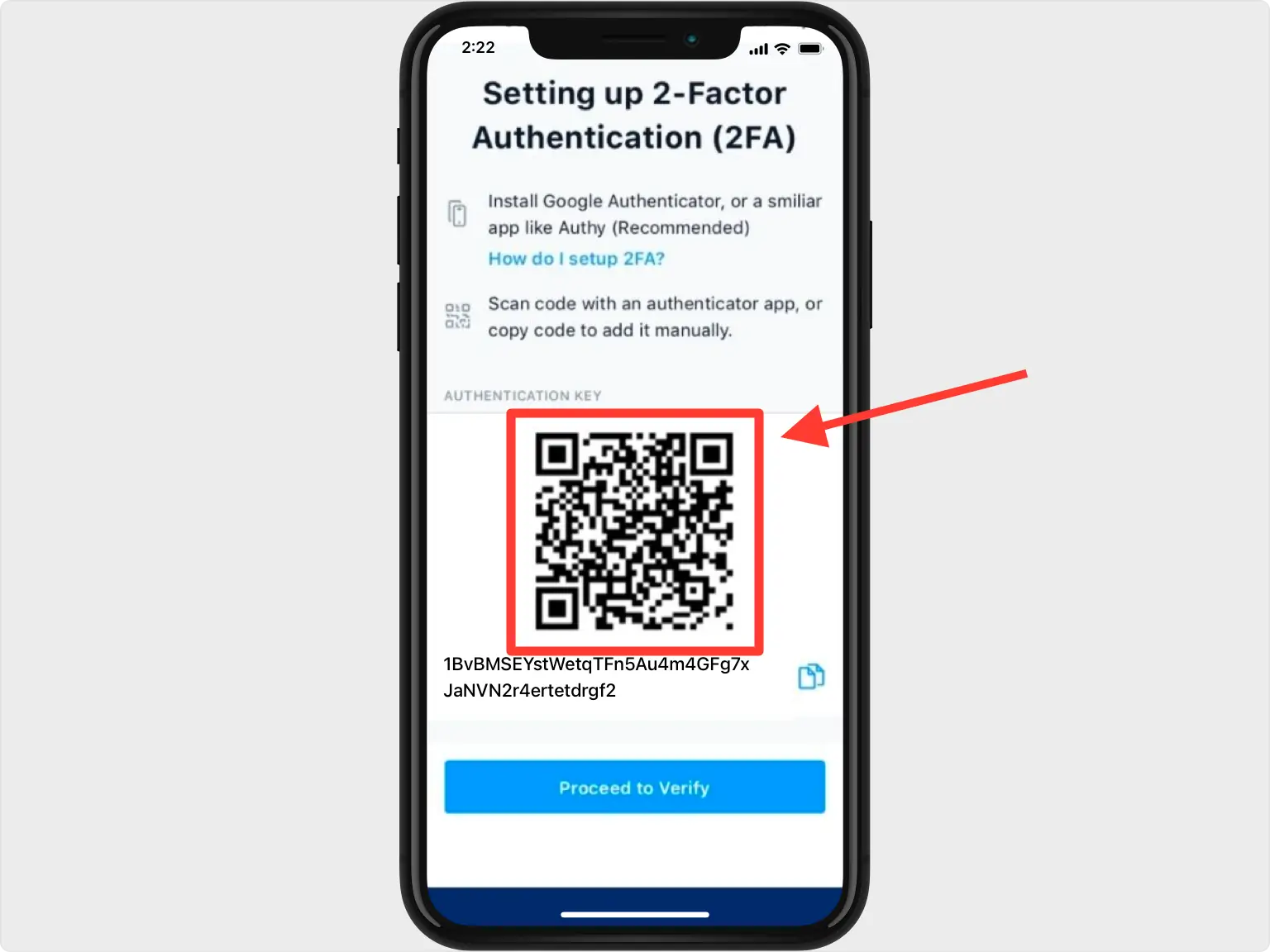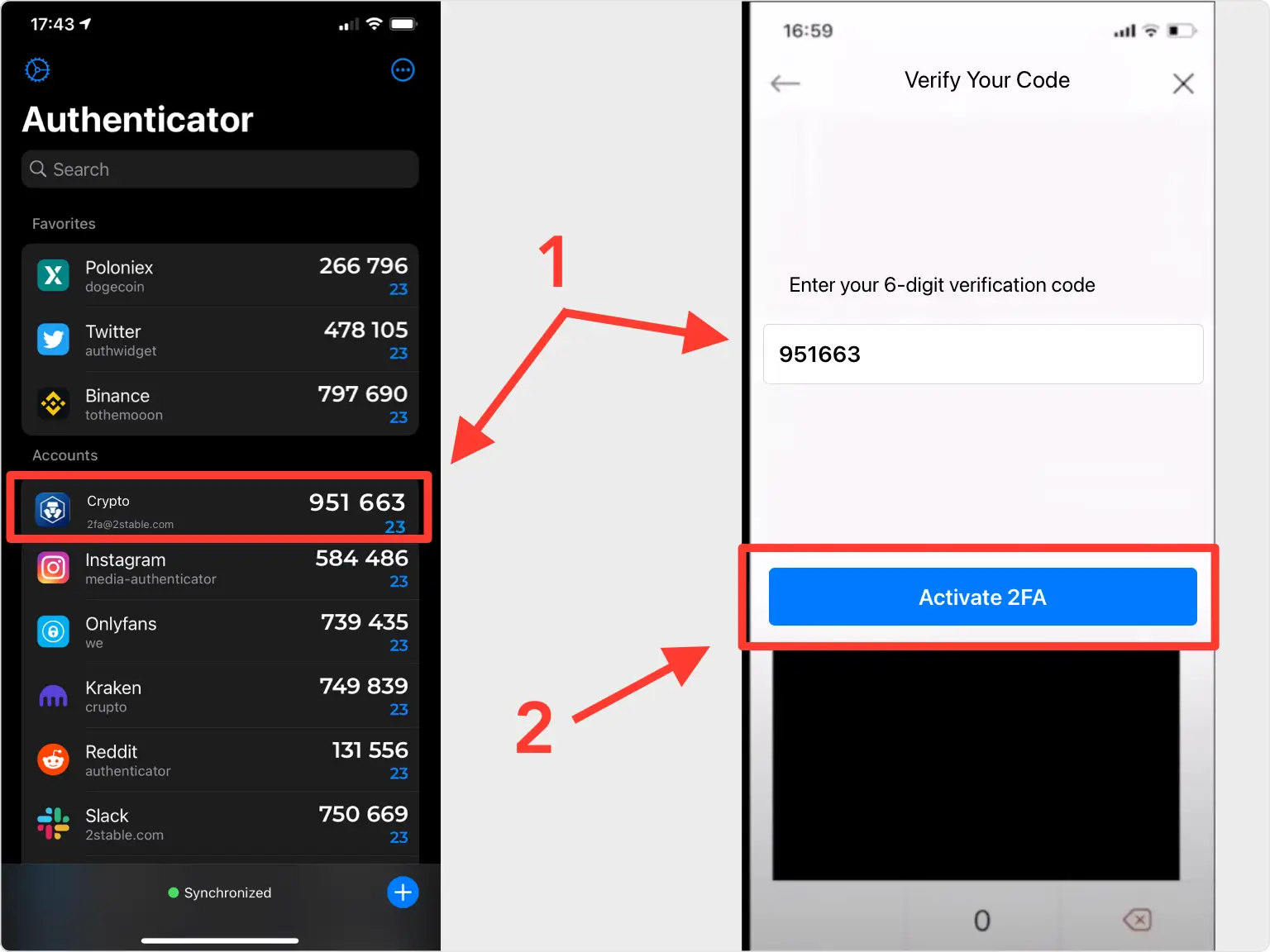Cryptocurrency isn’t just about riding the wave of digital cash; it’s about keeping your stash safe from digital pirates. That’s where Enable 2FA on crypto wallet comes in. Imagine it as transforming your crypto wallet into an impenetrable fortress. With ruthless hackers lurking, a solid line of defense is not just smart—it’s essential. This guide is your trusty sidekick, walking you through the process of adding that crucial second layer of security. Whether you’re new to the blockchain or a seasoned pro, let’s reinforce your digital vault together.
Understanding the Mechanics of 2FA in Crypto Security
What is Two-Factor Authentication?
Two-factor authentication (2FA) means using two ways to check it’s really you. Think of it like a secret club. To get in, you need to know the password and show a special badge — that’s like 2FA. Instead of just needing a password, you also need a code from your phone or other device, making it harder for thieves to get into your wallet and steal your crypto.
It’s a great shield for your valuable digital coins. For each login, 2FA asks for two proofs from you. One is your password; the other could be a code from an app on your phone. This way, even if someone else finds out your password, they still can’t get into your wallet without the second code.
Essential 2FA Methods for Cryptocurrency Wallets
Now, there are many ways to do 2FA, and picking the right one is key to keeping your crypto safe. You’ve got options like text messages (SMS), apps on your phone, and even gadgets like YubiKey.
Text message codes can work, but they’re not the safest. Hackers can trick phone companies and get your texts. So, it’s better to use 2FA apps compatible with bitcoin wallets for a stronger fortress around your crypto. Tools like Google Authenticator or Authy are popular choices.
These apps give you a fresh code every 30 seconds, and only you can see it. This means even if a bad guy gets your password, they won’t have this ever-changing secret code. But it’s not just about phones; gadgets like YubiKey are like physical keys to your digital safe. You plug them into your computer or tap them on your phone and boom — it’s like telling your wallet “It’s me, let’s go!”

For even more safety, some people use biometric 2FA — that’s things like fingerprint scans or face ID. It’s like using a part of you as a key, which is super hard for thieves to copy.
Remember, each method has its own steps. Whether you’re using Google Authenticator, setting up a YubiKey, or using SMS (if you must), follow the step-by-step 2FA setup to lock down your wallet tight.
Just like you need to know how to put a lock on your bike so it stays safe, you need to know how to protect your crypto with 2FA. It’s an extra step, but thieves are getting smarter, and your crypto is too precious to risk. By using 2FA, you’re not just being careful — you’re being smart. After all, you wouldn’t go on a bike ride without a helmet, right? So don’t leave your cryptocurrency wallet without 2FA.
Remember to always have backups for your 2FA codes, though. If you lose your phone or gadget, you’ll need these to get back into your wallet. Write them down, keep them secure, and you’ll have a solid plan B.
Setting up 2FA is like training to be a ninja for your crypto — it’s all about smart moves and being ready. So let’s do this, and keep your digital treasure safe!
Step-by-Step Guide to Configuring 2FA on Your Crypto Wallet
Selecting the Right 2FA App for Your Needs
Ready for a safer wallet? Let’s find the best 2FA app for you. You may ask, what’s 2FA? It’s like a strong lock for your digital cash. It checks if it’s really you. You need something you know (like a password), and something you have (like your phone or a special key).
Most folks use their phones. Google Authenticator is a winner. It’s easy and it works with tons of wallets. Got an iPhone? Try Authy. It backs up your codes just in case. Using Android? Google Authenticator is your friend.
Some apps send codes via SMS to your phone. But be careful. Thieves can trick your mobile company and steal these texts. It’s rare, but scary. Let’s pick an app that’s tougher to break. Maybe one that can be on your phone and somewhere else, like your tablet.
Activating 2FA on Popular Cryptocurrency Wallets
Time to lock that wallet down! Most wallets are a breeze to secure. Just follow these steps and you’ll boost your safety big time.
Got a software wallet? Open the security settings. Look for “Two-Factor Authentication” or “2FA”. Choose it, and the wallet will show a QR code. This is where your phone’s camera comes in. Open your 2FA app. Tap “Add”, then point your phone at the QR code. That’s it. Your app now makes a new code every few minutes. Use it with your password to log in safe and sound.
If you use a Ledger Nano or Trezor, it’s simple, too. When you set it up, they’ll ask if you want 2FA. Say yes! They’ll tell you what to do step by step. You might use your phone or something like a YubiKey. Remember, write down the backup codes they give you and keep them safe—like, super safe. You’ll need them if your phone goes missing.
What about mobile wallets on your phone? They also have easy 2FA setup. Look in their settings for “Security”. Tap “Turn on 2FA” and choose your method. Scan the QR code with your 2FA app, and you’re set. Each time you open your wallet, it’ll ask for the code from your app. This way, only you get inside.
After you’ve set up 2FA, take it for a spin. Log out and log back in with your new code. It should snap open, just like that. If not, no sweat. Double-check the steps you took and try again. You might have missed a beat. Once you’re in, you’ve just made your wallet a lot harder to crack. You’ve done well. Your crypto is safer, and you’re in the know. Now, keep those backup codes like a treasure, because that’s just what they are.
Remember, tech stuff can feel tricky at first. Take it slow, and follow these steps. You’re not just using an app; you’re turning your wallet into a fortress. And when it comes to your hard-earned crypto, that’s exactly what you want.
Overcoming Challenges: Backup Solutions and Troubleshooting 2FA
Secure Backup Strategies for Your 2FA Codes
When setting up 2FA, losing access to your codes can lock you out of your wallet. To avoid this, always back them up. Write down the backup codes. Store them in a safe or a secure place. This is crucial for securing cryptocurrency wallets with 2FA.
For digital wallets, some 2FA apps offer cloud backup. But remember, this might add risk. My advice? Rely on physical backups. They’re often safer from online threats.
Never share your backup codes. Even with friends or family. These codes are keys to your crypto fortress. Keep them as safe as the assets they protect.
Common 2FA Setup Issues and How to Resolve Them
Setting up 2FA can sometimes be tricky. Errors can happen. Here’s how to tackle them.
What if your 2FA codes are incorrect? First, check your device’s time. It must sync perfectly with the 2FA app’s time. For Google Authenticator, this sync is a must. If the time is off, your codes may not work.
Second, what if you’re unable to scan the QR code? Try entering the setup key manually. Each 2FA app gives you this key alongside the QR code. It’s a string of numbers and letters. Enter it exactly into your app.
Lose your phone or your 2FA device? This is where backup codes come in. Use those to regain access. Then, set up 2FA on a new device immediately.
If you’re using SMS verification for cryptocurrency wallets, beware of its flaws. SMS can be less secure. Hackers can hijack these messages. So, I suggest using apps or hardware tokens for stronger security.
Lastly, are you facing trouble activating 2FA on Ethereum or any other wallets? Ensure your wallet app is up to date. Outdated apps can lead to issues during setup.
Remember, the goal of two-factor authentication crypto security is to protect you. If you’re stuck, most crypto services have guides and help desks. Use them. And remember, securing Altcoin wallet 2FA, or any other currency, follows these same rules.
Taking these steps seriously will not only protect your assets but also give you peace of mind. You’re setting up a defense that keeps thieves out while letting you in. It’s about making your wallet secure with minimal hassle.
The process might seem a bit complex at first. But once you’ve moved past these challenges, you’ll feel safer. Your crypto assets will be better protected. And you, as the keeper of your digital treasure, will have the only key.
So, take the time to set up your 2FA correctly. Solve any issues head-on. And rest easy knowing you’re on the right path to enhancing your wallet security with two-factor.
Advanced 2FA Techniques: Enhancing Your Wallet’s Defenses
Biometric Verification: The High-Tech Shield
We use our unique body features to boost wallet safety. Think of biometric checks. They use things like fingerprints. This is cool because who else has your fingerprint, right? For your crypto wallet, this is one tough guard. To set it up, you mostly just scan your finger. Then, when you want to get into your wallet or sign a deal, you’ll need your finger again. This keeps your coins safer than ever.
Scans don’t just stop at fingers. We’ve got face recognition too. So if your phone or device can see your face, you can use that for crypto too. Make sure your device’s software is up to date first. Pair your face or fingerprint with your wallet app. After that, any time you need to get into your wallet, it will check your face or finger first.
But what if your device or app messes up? Always have a backup plan. Write down any backup codes your wallet app may give you and keep them safe. This way, if your phone goes missing, you can still get to your money.
Remember, not all crypto wallets may support these fancy checks. So, check if your wallet does before you start.
Using Hardware Tokens Like YubiKey for Added Security
Now, let’s chat about hardware tokens. These are small tools you carry like a YubiKey. They plug into your computer or touch your phone. Then, they prove it’s you trying to get into your wallet. They have a secret code that they share with your wallet. This makes sure no one else can get in.
Here’s a real-life example. You want to get into your wallet. You plug in your YubiKey. Then, your wallet’s site asks for the touch of the key. You touch it, and boom, you’re in. It’s like having a physical key to your digital coins.
The setup is pretty straight. You link your key to your wallet. You will get steps from your wallet service or the YubiKey instructions. Just follow these steps one by one. Take care of your key like it’s precious – because it is. It keeps your crypto safe.
Also, what if the key gets lost? Many services let you set up more than one key. Do this if you can. Also, keep your backup codes from when you first set up your token. Once more, these codes are your emergency kit for wallet access.
Using both of these advanced techniques can really level up your wallet’s defense. It’s like building a super-strong, high-tech fort for your digital assets. Keep learning about 2FA. The more you know, the safer your crypto will be. And always think ahead. Have steps ready for if things go wrong. That way, you guard your assets like a pro.
In this post, we dug into two-factor authentication or 2FA, a crucial feature for keeping your crypto wallet secure. Starting with the basics, we explained what 2FA is and highlighted key methods to protect your digital coins. We then walked you through setting up 2FA, from picking a good app to activating it on various wallets. We also looked at backup tips and fixes for common setup glitches. Our final point showed you advanced options like fingerprint scans and special hardware keys for even stronger security. Remember, in the world of crypto, taking extra steps to safeguard your wallet is not just smart; it’s essential. Stay secure and keep your investment safe with these tools and tips. Follow Crypto Market Pulse to update more knowledge about Crypto.
Q&A :
How do I activate 2FA on my cryptocurrency wallet?
Enabling two-factor authentication (2FA) on your cryptocurrency wallet adds an extra layer of security, protecting your funds from unauthorized access. The process may vary slightly depending on the wallet you use, but typically involves going into your wallet’s security settings, selecting the option to enable 2FA, and linking it to an authentication app like Google Authenticator or Authy. Follow the in-app instructions to complete the setup.
What is the best 2FA method for crypto wallets?
The best 2FA method for crypto wallets is usually considered to be an authenticator app, which generates time-sensitive codes. These apps, such as Google Authenticator or Authy, are often preferred over SMS-based 2FA because they’re less susceptible to interception through SIM swap attacks or other mobile-related vulnerabilities. Some users may also opt for hardware-based 2FA devices like YubiKey for higher security.
Can I use 2FA on all types of cryptocurrency wallets?
Most software-based cryptocurrency wallets (including mobile and desktop wallets) and exchanges support 2FA. However, hardware wallets (also known as cold wallets) do not typically incorporate 2FA in the same way since they’re designed to operate offline for enhanced security. Instead, hardware wallets often rely on a PIN code and a recovery phrase.
Why is it important to enable 2FA on a crypto wallet?
Enabling 2FA is crucial because it provides a second layer of defense for your crypto wallet. Even if a hacker cracks your password, they would still need access to your second factor, such as your phone or hardware token, making it much harder for them to gain unauthorized access to your assets.
What should I do if I lose access to my 2FA device for my crypto wallet?
If you lose access to your 2FA device, you should immediately contact your wallet provider’s support team for help. Most services will have a process in place to recover your account, which may involve verifying your identity and possibly using backup codes provided when you set up 2FA. It’s critical to have backup methods established, such as a backup phone number or backup codes, in case you lose your primary 2FA device.



